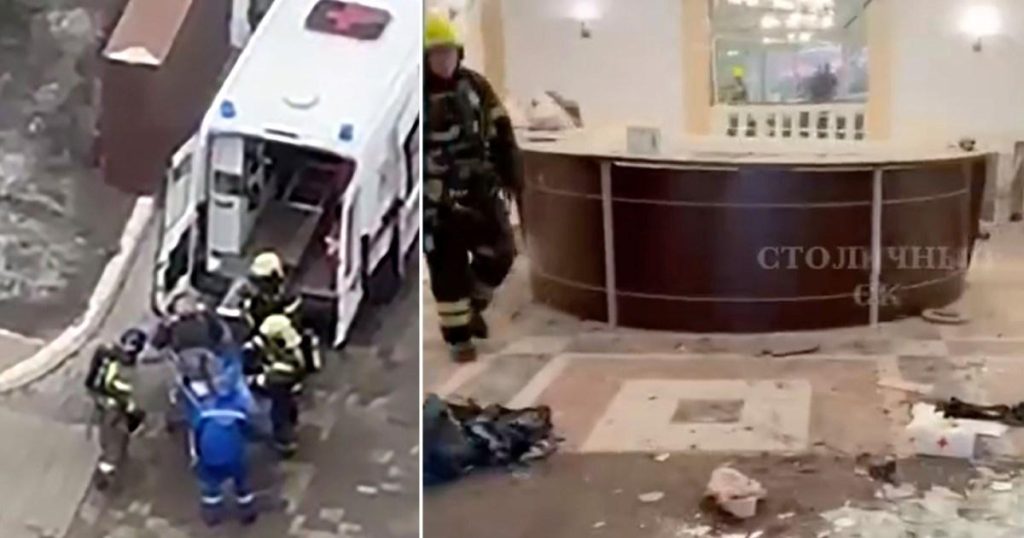The Assassination of Armen Sarkisyan: A Pro-Russian Paramilitary Leader’s Demise in Moscow
The Scarlet Sails residential complex, nestled on the banks of the Moskva River just seven miles from the Kremlin, became the scene of a deadly explosion on September 6, 2024. Armen Sarkisyan, a pro-Russian paramilitary leader, and at least one of his bodyguards were killed in the blast, with three others sustaining injuries. The explosion, suspected to be a targeted assassination orchestrated by Ukraine, ripped through the building’s entrance, scattering debris and shattering glass across the area. Footage captured the immediate aftermath, depicting a scene of chaos and destruction with smoke billowing from the gutted entrance. While Russian authorities remain tight-lipped about the specifics of the attack, unnamed law enforcement officials cited by Tass news agency have described it as "ordered and carefully planned," hinting at a deliberate operation. This incident adds another layer of complexity to the ongoing conflict between Russia and Ukraine, raising questions about the escalating covert operations and potential for further retaliatory actions.
Armen Sarkisyan, the founder of the ArBat Battalion, a pro-Russian fighting force operating in Donetsk, was a controversial figure with deep ties to the conflict in eastern Ukraine. He was also president of the self-proclaimed Donetsk People’s Republic (DPR) boxing federation and believed to have close connections to Chechen security forces. His ArBat Battalion, operating under the Kremlin-controlled mercenary unit "Redut," actively participated in the Russian invasion of Ukraine. Sarkisyan’s history was further marred by allegations of organizing "titushky" gangs, groups known for attacking anti-government demonstrators during the 2014 Maidan protests in Ukraine. His alleged association with ousted Ukrainian President Viktor Yanukovych added another dimension to his complex persona, placing him at the center of a web of political intrigue.
Ukrainian authorities had already charged Sarkisyan in absentia with recruiting prisoners to fight against their country, adding a legal dimension to his involvement in the conflict. Independent Russian media outlet Mediazona painted a picture of Sarkisyan as a long-standing organized crime figure operating in Horlivka, a city in the Donetsk region, further deepening the shadows surrounding his life and activities. The attack on Sarkisyan, a figure with such deep ties to the conflict and alleged criminal activities, highlights the complex and often murky nature of the ongoing war, where the lines between military operations and covert actions blur.
The incident at the Scarlet Sails complex resonates with echoes of other targeted attacks and assassinations that have punctuated the Russia-Ukraine conflict. The use of explosives in a civilian residential area raises concerns about the widening scope of the conflict and the potential for collateral damage. The incident also underscores the challenges faced by Russian security services in preventing such attacks, even in the heart of Moscow, relatively close to the Kremlin. The boldness of the operation, if indeed orchestrated by Ukrainian forces, signals a potential shift in tactics and an increased willingness to strike high-value targets within Russian territory.
The assassination of Sarkisyan adds another layer of tension to the already strained relations between Russia and Ukraine. While official responses have been measured, the incident is likely to fuel further animosity and potentially trigger retaliatory actions. The incident also raises questions about the involvement of other actors, both state and non-state, in the ongoing conflict, and the potential for escalation. The targeting of a prominent pro-Russian figure like Sarkisyan could be seen as a significant blow to Russia’s efforts in eastern Ukraine and a morale booster for Ukrainian forces.
The incident at the Scarlet Sails complex serves as a stark reminder of the ongoing human cost of the war in Ukraine. While the focus often remains on battlefield casualties, incidents like this highlight the vulnerability of individuals even far from the front lines. The attack also raises ethical and legal questions regarding the targeting of individuals, particularly those with alleged ties to criminal activities. The incident underscores the need for a peaceful resolution to the conflict and a de-escalation of tensions to prevent further loss of life and suffering. The international community’s role in mediating a resolution and ensuring accountability for human rights violations becomes ever more crucial in the face of such incidents.


